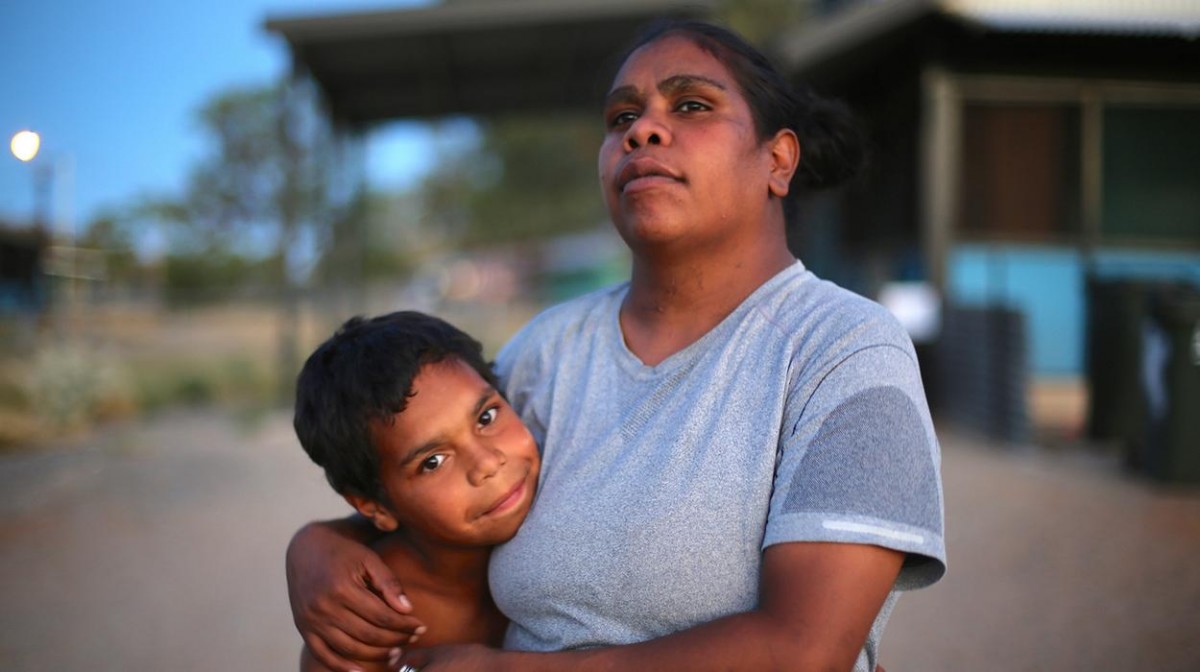Difficult questions, no easy answers
PG, 90 minutes
3 Stars
Review by © Jane Freebury
In September last year, a 12-year-old Indigenous boy from Alice Springs, Dujuan Hoosan, was invited to make a brief address to the UN Human Rights Council in Geneva. His short statement, easily found online, begins with him saying that the government in his country isn’t listening to Indigenous people.
The particular point that Dujuan wants to make at the UN is that there should be an end to the incarceration of 10-year-old children in Australia.
In all Australian jurisdictions the age of criminal responsibility is 10 years of age. This despite recommendations from a royal commission, medical doctors’ associations, and other professionals, that the age be lifted to 12 or 14 years.
In his short statement to the Human Rights Council, Dujuan also spoke of his people’s dreams, hopes and rights, and the need for Indigenous youth to learn their history, language and culture from their elders.
This is the documentary feature about him and his life with his family in Alice Springs, In My Blood It Runs, that set him on the road to the UN.
When he was 10, Dujuan (aka Dujuan Turner), was nearly locked up himself. And, as he notes, were he in prison at 13, he would have been eligible to be placed in solitary confinement. But for an intervention by members of his family, in particular his grandmother, Carol Turner, he too could have entered a youth detention centre in the Northern Territory, where nearly 100% of detainees are Indigenous.
 What led to this? In My blood It Runs, a delicate observational documentary that was three years in the making, tells the story of Dujuan and his family. A presentation of Indigenous disadvantage in the first person.
What led to this? In My blood It Runs, a delicate observational documentary that was three years in the making, tells the story of Dujuan and his family. A presentation of Indigenous disadvantage in the first person.
Dujuan was doing poorly at school, scoring ‘straight Es’, feeling badly about himself and he mucked up. How surprised should we be by this, when we see scenes from his school. A lesson in Australian history is about the First Fleet, using a textbook dredged up from the distant past, that makes no meaningful mention of Aboriginals. It is startling.
In another class, a teacher reads an Indigenous story, saying at the same time that she doesn’t understand it. How insensitive, and disrespectful.
Add to this, some cringeworthy voiceover from old black-and-white newsreel clips intoning about the Aboriginal population. Inserted within the realities of Dujuan’s life on screen, they are a reminder that current prejudice reveals traces of the worst of old racist attitudes.
In observational style, we watch and listen as Dujuan shows the way. As the camera follows him around, he talks to us, directly and in voiceover, about what he thinks and feels. He would like to become a healer, and pledges he will never drink alcohol or fight.
He has learnt how to control his anger by going bush each week with his elders. The best place to learn is on country at Sandy Bore, his grandmother’s place, 100 kilometres north of Alice Springs.
In My Blood It Runs, a collaboration between the filmmaker, Maya Newell, and Dujuan’s family members, was filmed in the homelands of his Arrernte and Garrwa families.
Before film production was underway, director Newell – also a producer, and cinematographer – had developed intimate knowledge of the Indigenous communities through a long association extending back years.
This helps explain the depth and breadth of her collaboration with Dujuan’s family. In particular with mother Megan and grandmother Carol, who also have director credits.
It’s Nanna Carol who speaks to the film’s key issue, education.
When she takes Dujuan and the other children to her Sandy Bore homelands she insists they speak in Arrernte language. But she also wants Indigenous kids to grow up learning both ways, Indigenous and mainstream Australian. How can Indigenous people represent themselves in society without a command of English too?
In My Blood It Runs, a quote taken from Dujuan himself, has won local and overseas awards. It raises critical questions, questions raised by Indigenous people themselves.
With its quiet and non-confronting style, its commitment and sincerity, the film makes an important contribution to the debate on Indigenous disadvantage. It raises difficult questions to which there are no easy answers.
How does Dujuan envisage his future? He just wants a normal life. Just wants to be himself, an Aboriginal.
If only it were that straightforward.
First published in the Canberra Times on 22 February 2020
*Featured image: Dujuan with his mother Megan Hoosan
